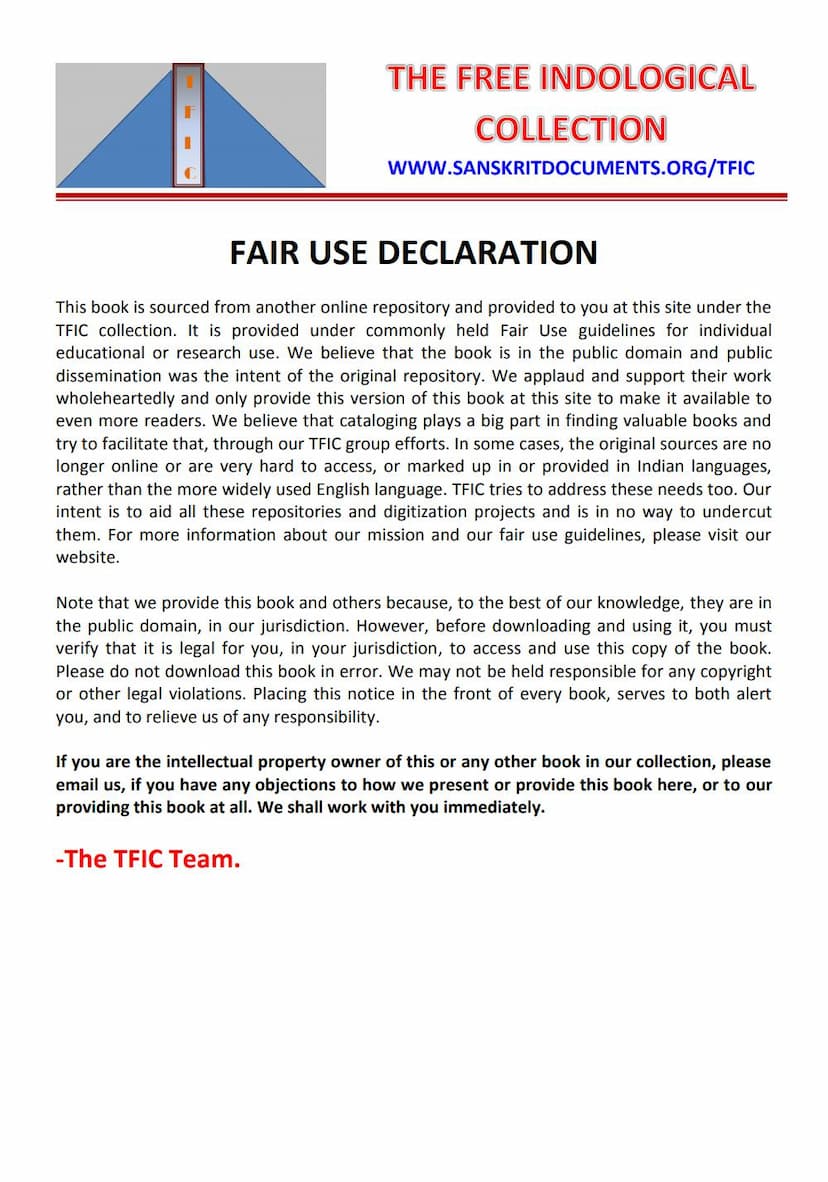Karma And Rebirth
Added to library: September 2, 2025

Summary
Here's a comprehensive summary of the Jain text "Karma and Rebirth" by Christmas Humphreys, based on the provided pages:
Overall Theme: The book aims to present the doctrines of Karma and Rebirth from a spiritual rather than a purely mechanical perspective, arguing for their vital importance in understanding life and reconstructing Western civilization. Humphreys emphasizes that these are not abstract Eastern concepts but universal laws with profound practical implications.
Key Concepts and Arguments:
- Karma as the Ultimate Law: Karma is presented as the fundamental, all-encompassing law of the universe, governing cause and effect on physical, mental, and spiritual planes. It's described as a living, intelligent, and perfectly just law that seeks to restore harmony. It's not a blind force but works through intelligent agents and the inherent nature of the universe.
- The Nature of Karma:
- Not Mechanical, but Spiritual: While it involves cause and effect, viewing Karma as a simple debit/credit system is seen as a reduction of its power. It's about moral retribution and the spiritual consequences of actions.
- Rooted in Thought: Karma is the product of thought. Every act is rooted in thought, and the sequence is often ignorance, desire, will, thought, and act. Control of thought is crucial for controlling action.
- Impersonal and Intelligent: Karma is not a personal God but a universal law. It doesn't reward or punish; we reward and punish ourselves by aligning with or against Nature's laws.
- Personal Responsibility, Universal Interdependence: While individuals are responsible for their Karma, all are interconnected. The aggregate of individual Karma forms national Karma, and national Karma forms world Karma. No one sins or suffers alone.
- Motive is Key: The motive behind an action is the dominating factor. "Merits" (from right motive) lead to enlightenment, while "felicities" (pleasant Karma from good deeds) are more about worldly pleasantness.
- Not Good or Bad: Karma simply is. Labeling it "good" or "bad" is a human projection. What appears as misfortune might be a necessary clearing of past errors, and good fortune might lead to spiritual pride.
- No Luck or Chance: All events, even seemingly coincidental ones, are the result of previous causes.
- Predestination vs. Free Will: Karma is not predestination or fatalism. It's the consequence of past actions, but we have free will to choose our future actions and influence our destiny. We are bound by our fate, but we are also our fate.
- Rebirth as the Inseparable Twin of Karma: Rebirth is necessary for Karma to work out its full effects. Life is a school where karmic lessons are learned.
- The Reincarnating Entity: What reincarnates is not an immortal soul but a "bundle of attributes called Character," a ray or spark of the Universal Essence. The Buddha taught "An-atta" (no-soul) to counter the belief in an eternal, separate self.
- The Flame Analogy: Life is like a flame transmitted from one combustible aggregate (body) to another. The flame is the same in continuity but the candle is new.
- The "Three Fires": Hatred, lust, and illusion are the driving forces behind rebirth. Illusion (ignorance of An-atta) is the strongest.
- Choice of Body: The reincarnating consciousness (soul) chooses a body and environment suitable for its karmic needs and development. This explains heredity and environment, which serve Karma.
- No Rebirth in Animals: Once consciousness reaches the human level, there is no return to animal form. Dissolution is possible, but never a descent below the human stage.
- Objections to Rebirth Addressed:
- No Memory: The brain is new each life; memory is a faculty of the mind that can access the Akashic Records. Obscured memory is seen as merciful.
- Suffering for Others' Deeds: The inner mind (the reincarnating entity) is the one suffering, and the new brain is a new instrument.
- Heredity Disproves Rebirth: This confuses the mind's choice of body with the body's inheritance.
- Uncongenial: Personal likes and dislikes are irrelevant to the Law; one must accept and work with the consequences of one's actions.
- Karma and Rebirth Applied:
- Character Building: Acceptance of these doctrines encourages deliberate character building, planning for the future, and taking responsibility for one's path.
- Changing Values: It leads to a revaluation of life, seeing people as old friends/enemies, the body as an instrument, and the present moment as crucial for building the future.
- End of Suffering: The goal is to transcend the illusion of a separated self and to act without attachment to results, thus "burning up" Karma.
- The Middle Way: Emphasizes temperance and avoiding extremes, leading to actions without reaction and thus no karmic consequence.
- Self-Sacrifice: True liberation involves self-sacrifice for the benefit of all humanity, contributing to a "Guardian Wall" around mankind.
- The Ending of Karma and Rebirth:
- The Paradox: One cannot truly know the ending until the end is reached.
- Faith and Works: Faith in the Law and the diligent performance of duty are essential.
- Transcending Self: The key is to diminish the "self" that causes and suffers Karma, acting "resultlessly" without attachment to outcomes.
- Motive is Key: The motive must become increasingly selfless until the "I" that is not "I" is purged, and action is done simply because it is right.
- Bodhisattva Ideal: Those who have attained liberation work for humanity, guiding and protecting others, reflecting the interconnectedness of all beings.
Author's Stance and Purpose: Humphreys writes not as a detached scholar but as a believer in the doctrine, seeing it as essential for Western civilization's reconstruction. He emphasizes the "sweet reasonableness" and practical applicability of Karma and Rebirth, urging readers to test the principles through their own experience and intuition. He critiques the Western tendency to mechanize spiritual concepts and rely on outdated textbooks, advocating a return to original sources and a more spiritual understanding.